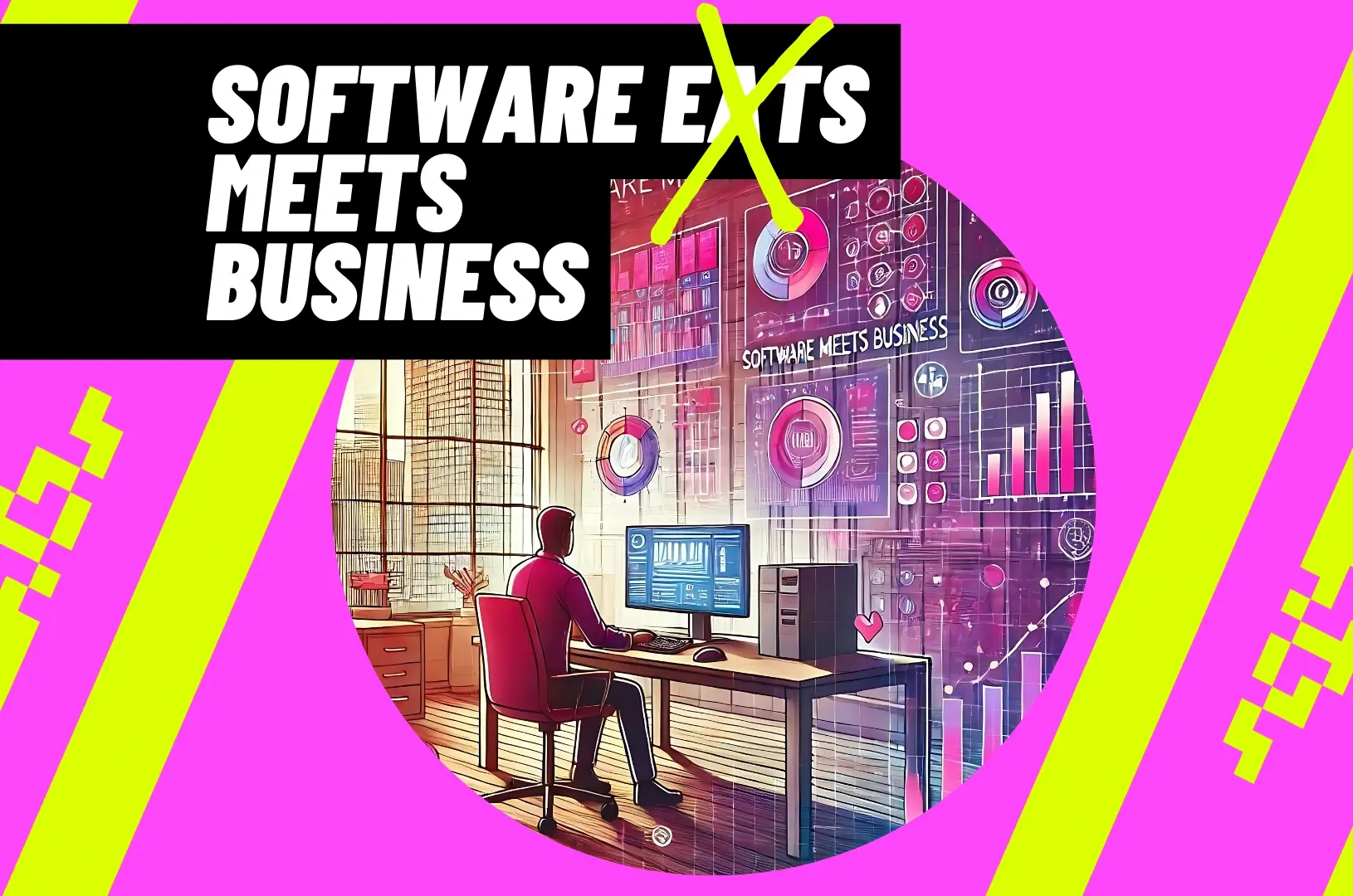
From Pathologist to Innovator: Iskander Chaudhry on Building Game-Changing Software for Healthcare - E1
Host Richard Bundock sits down with Iskander Chaudhry, the CEO of PathHub, to dive deep into the fascinating intersection of healthcare and technology.
In this exciting episode of Software Meets Business, host Richard Bundock sits down with Iskander Chaudhry, the CEO of PathHub, to dive deep into the fascinating intersection of healthcare and technology. Iskander, a seasoned consultant pathologist turned entrepreneur, shares his unique journey from working in clinical pathology to founding a software company that’s revolutionising the way pathology labs operate.
[00:00:10]
Rich: Welcome to another amazing episode of Software Meets Business. Today, I’m thrilled to have with me Iskander Chaudhry, CEO of PathHub Software. Hi, Iskander!
Iskander: Hi, Richard! Great to be here.
[00:00:43]
Rich: Iskander, you’ve built a software business in the challenging field of pathology. Tell us about your background and how this journey began.
Iskander: Sure. I wear two hats—I’m a consultant pathologist, working in the NHS since 2005, and I’ve always had an interest in building businesses. Alongside my clinical work, I’ve developed a portfolio in education and service delivery. Initially, I focused on training and education, offering exam preparation courses for FRCPath and updates on histopathology subspecialties like skin and breast pathology.
[00:02:49]
Rich: How did your work in education lead you to start building software?
Iskander: My first ambition was to create an online education platform. I worked with a company in Manchester to build interactive websites and quizzes using a custom CMS. Over time, I learned how to create websites myself and even explored coding to understand the technology better. The real pivot came when I won a contract with Virgin Care to provide pathology services. That’s when I realised I needed software to manage pathology workflows. At the time, there wasn’t anything off-the-shelf tailored for smaller labs like ours.
[00:04:59]
Rich: What was your initial approach to building the software?
Iskander: It started as a basic database for managing pathology cases—data entry, generating reports, and sharing PDFs with clinicians. I worked with several third-party companies, but the journey wasn’t easy. My first attempt failed due to scope creep and a lack of expertise on the developer’s side.
[00:07:00]
Rich: Tell us about the challenges with your second attempt.
Iskander: The second company managed to build something, but it had major issues. There were bugs where data fields weren’t holding information consistently—reports were pulling data from the wrong cases. And then, midway through development, the hosting provider deleted the site, and there were no backups.
[00:09:00]
Rich: How did you turn things around?
Iskander: Through a contact, I connected with an outsourced team in Pakistan. They rebuilt the product quickly, and it became the foundation for our software. For the next two years, we iterated, adding features and improving the user experience based on my firsthand knowledge as a pathologist.
[00:13:23]
Rich: Eventually, you acquired the outsourced company, right?
Iskander: Yes. The owner wanted to sell, so I acquired the company, expanded the team into India, and brought in UK-based advisors. This allowed me to scale the software from a basic tool for my services to a more comprehensive solution that could address market needs.
[00:16:00]
Rich: When did you realise your software had broader potential?
Iskander: It happened almost by accident. A colleague in the US, Raj Singh, asked if I knew of any software that could help his pathology clients. I showed him what we’d built, and he was blown away. That’s when I realised our software could fill a gap in the market.
[00:18:29]
Rich: What sets PathHub apart?
Iskander: Traditional LIMS (Laboratory Information Management Systems) focus on all areas of pathology, with histopathology as an afterthought. Digital pathology tools, meanwhile, primarily handle image management. PathHub combines both—a digital LIMS system integrated with an IMS (Image Management System). This ensures a seamless workflow with no need for multiple logins or the risk of mismatched data.
[00:24:15]
Rich: How does this integration impact efficiency?
Iskander: It saves significant time. For example, if a pathologist processes 100 cases a week, even a one-minute inefficiency per case adds up to nearly two hours lost. By streamlining workflows, PathHub reduces delays and ensures cases are ready for multidisciplinary team meetings, which are critical for cancer treatment decisions.
[00:27:49]
Rich: What’s the current state of PathHub?
Iskander: We’ve made significant strides. PathHub is now used by small labs with a single pathologist, medium-sized labs with teams of 5–10, and larger hospital networks with multi-site operations. We’ve proven our software can scale to meet the needs of different clients while maintaining the same core benefits.
[00:31:26]
Rich: What advice would you give to someone looking to build software for their business?
Iskander: Don’t go it alone. Partner with people who have experience building robust software. Good developers are essential, but you also need strong leadership—someone with a CTO-like vision to manage teams and guide technical decisions.
[00:33:42]
Rich: The industry often makes software development seem easy. What’s your take on that?
Iskander: It’s far from easy. Building a reliable, scalable product is a science that requires the right mix of skills and expertise. Early mistakes—like working with developers who lacked proper engineering practices—taught me the value of partnering with experts who understand security, scalability, and modern practices like automated testing.
[00:34:42]
Rich: What’s next for PathHub?
Iskander: We’re focusing on scaling further and refining the product to support more advanced workflows. With the right partnerships and ongoing investment, we’re confident PathHub can continue to improve patient care by streamlining pathology processes.
[00:35:01]
Rich: Iskander, it’s been fantastic talking to you. Thank you for sharing your journey, and we wish PathHub every success.
Iskander: Thank you, Rich. It’s been a pleasure.

Contact us.
If you need a partner in software development, we're here to help you.
We will respond to your enquiry immediately.